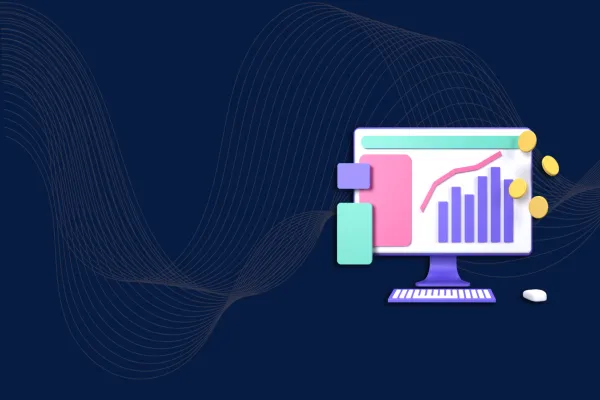Customer experience (CX) has become a key business differentiator in shaping how businesses engage with their customers. As digital technologies continue to advance, they are driving significant changes in customer interactions across industries. For C-suite executives, staying ahead of these trends is essential for delivering superior customer experiences and maintaining a competitive edge. As customers' expectations evolve, so must the technologies and strategies that drive exceptional experiences. This blog explores 10 key customer experience technology trends reshaping the industry, offering insights into how understanding and adopting these trends will help meet customer expectations and achieve long-term business success.
1. Mobile as the Primary Channel for Customer Engagement
Mobile devices have become the central touchpoint for customer engagement, with smartphones leading the charge. According to recent reports, smartphones have overtaken computers as the top source for e-commerce, with 92% of respondents in an Adobe survey indicating that their smartphone is their primary device. This shift underscores the importance of optimizing mobile customer experiences to meet the expectations of today’s digital-savvy consumers.
For instance, retailers are focusing on mobile-first strategies to ensure seamless shopping experiences across all devices. This includes optimizing mobile websites, creating mobile apps with personalized features, and leveraging mobile payment options. Businesses that prioritize mobile engagement are better positioned to capture the growing market of mobile shoppers and enhance customer satisfaction.
2. Transition from Content Management to Digital Experience Management Platforms
Traditional content management systems (CMS) are evolving into more sophisticated digital experience management (DXM) platforms. These next-gen platforms go beyond content management, integrating customer data, core services, and marketing processes to deliver consistent and optimized experiences across all digital touchpoints.
For example, businesses are using DXM platforms to unify their marketing, commerce, and service processes, ensuring that every customer interaction is informed by real-time data and tailored to individual preferences. This holistic approach to managing digital experiences enables companies to deliver more relevant and personalized content, driving engagement and loyalty.
3. The Rise of Descriptive, Predictive, and Prescriptive Analytics
The era of Big Data has given rise to advanced analytics tools that provide deeper insights into customer behavior and preferences. Descriptive analytics help businesses understand what has happened, predictive analytics forecast what could happen, and prescriptive analytics suggest what should be done.
For example, a retail chain might use predictive analytics to forecast product demand based on historical sales data and seasonal trends. By linking this information with prescriptive analytics, the company can optimize inventory levels, reduce stockouts, and improve customer satisfaction.
4. Multi-Channel, Multi-Party, Continuous Improvement “Voice-of-X” Programs
Voice-of-the-Customer (VoC) programs have long been a cornerstone of CX management. However, the evolution of CX requires a more comprehensive approach that spans multiple channels and stakeholders. Multi-channel, multi-party “Voice-of-X” programs go beyond just listening to customers—they provide actionable insights by analyzing data from call centers, physical stores, digital platforms, and social media.
For instance, a financial institution might implement a Voice-of-X program that includes feedback from customers, employees, and partners. By integrating this data, the company can identify areas for improvement across the entire customer journey, leading to more targeted and effective CX initiatives.
5. Artificial Intelligence: More Intelligent, Less Artificial
Artificial Intelligence (AI) is rapidly advancing, becoming a critical enabler of personalized and efficient customer experiences. AI’s ability to process vast amounts of data, streamline processes, and model future scenarios is enhancing its role in CX.
For example, AI-powered recommendation engines on e-commerce platforms analyze customer behavior to suggest products that align with their preferences. By delivering more relevant recommendations, AI not only improves the shopping experience but also boosts conversion rates and sales.
6. Voice-Activated Interfaces: The New Frontier of Customer Interaction
Voice-activated interfaces, such as Amazon’s Alexa and Google Assistant, are becoming mainstream tools for customer interaction. These interfaces allow customers to engage with businesses through voice commands, providing a more natural and convenient way to access services and support.
For instance, a hotel chain might integrate voice-activated assistants in guest rooms, enabling guests to control room settings, order room service, or get local recommendations using simple voice commands. This enhances the guest experience by offering a hands-free and personalized service.
7. Customer-Centric Virtual and Augmented Reality
Virtual Reality (VR) and Augmented Reality (AR) are no longer just for gaming; they are becoming integral to customer experience strategies across industries. These technologies offer immersive experiences that allow customers to interact with products and services in entirely new ways.
For example, an automotive company might use VR to let customers experience a virtual test drive of a new vehicle. This not only enhances the shopping experience but also allows customers to make more informed purchasing decisions without visiting a physical dealership.
8. The Impact of the Internet of Things (IoT) on Customer Experience
The Internet of Things (IoT) connects billions of smart devices, creating new opportunities for enhancing customer experiences. IoT enables businesses to gather and analyze data from connected devices, providing insights that can be used to improve products and services.
For example, a smart home company might use IoT data to optimize energy consumption for customers by automatically adjusting heating and cooling settings based on usage patterns. This not only improves customer satisfaction but also promotes sustainability.
9. Cybersecurity’s Growing Role in Customer Loyalty
As digital interactions increase, so does the importance of cybersecurity in maintaining customer trust and loyalty. Data breaches and cyber threats can erode customer confidence, making robust cybersecurity measures a critical component of the customer experience.
For instance, a bank might implement advanced encryption and multi-factor authentication to protect customer data during online transactions. By prioritizing security, the bank not only safeguards customer information but also strengthens its reputation as a trustworthy institution.
10. The API Economy: Enhancing Responsiveness and Personalization
Application Programming Interfaces (APIs) are becoming essential tools for delivering responsive and personalized customer experiences. APIs enable businesses to integrate and connect various systems, making it easier to deliver tailored content and services in real-time.
For example, a travel company might use APIs to integrate weather data, flight schedules, and customer preferences into a single platform. This allows the company to offer personalized travel recommendations and real-time updates, enhancing the overall customer experience.
The Way Ahead
The future of customer experience is being shaped by these 10 technology trends, each offering unique opportunities for businesses to enhance customer satisfaction and drive competitive advantage. For C-suite executives, understanding and embracing these trends is crucial for staying ahead in an increasingly digital world.
1. Invest in Scalable Technologies: As customer expectations continue to rise, it’s essential to invest in scalable technologies that can grow with your business. Whether it’s AI-driven personalization or voice-activated interfaces, ensure that the solutions you choose can adapt to future needs.
2. Embrace Advanced Analytics: Descriptive, predictive, and prescriptive analytics are key to understanding customer behavior and making informed decisions. Invest in analytics tools that provide actionable insights across all touchpoints.
3. Innovate with AI and Voice Technologies: AI and voice-activated interfaces are transforming customer interactions. Explore how these technologies can be integrated into your CX strategy to offer more personalized and efficient services.
4. Secure Your Digital Ecosystem: As cybersecurity becomes a key factor in customer loyalty, ensure that your digital platforms are protected with the latest security measures to build and maintain customer trust.
5. Experiment with Emerging Technologies: Don’t shy away from experimenting with VR, AR, IoT, and robotics. These technologies have the potential to revolutionize customer experiences, offering new ways to engage and delight customers.
6. Focus on Data Integration: The ability to deliver exceptional customer experiences hinges on effective data integration. Invest in CDPs and other data management tools that provide a unified view of the customer, enabling more personalized and relevant interactions.
7. Prioritize Security and Trust: As new technologies like blockchain and Emotional AI become more prevalent, it’s crucial to prioritize customer security and trust. Implement robust data protection measures and ensure that AI-driven insights are used ethically and transparently.
Is your organization ready to embrace the future of customer experience?
At Valuebound, we specialize in helping businesses navigate the rapidly evolving CX landscape. Contact our team of experts today to explore how we can assist you in implementing these trends and driving customer satisfaction and loyalty. Discover more of our insightful blogs on our website and connect with us for personalized solutions tailored to your business needs.





